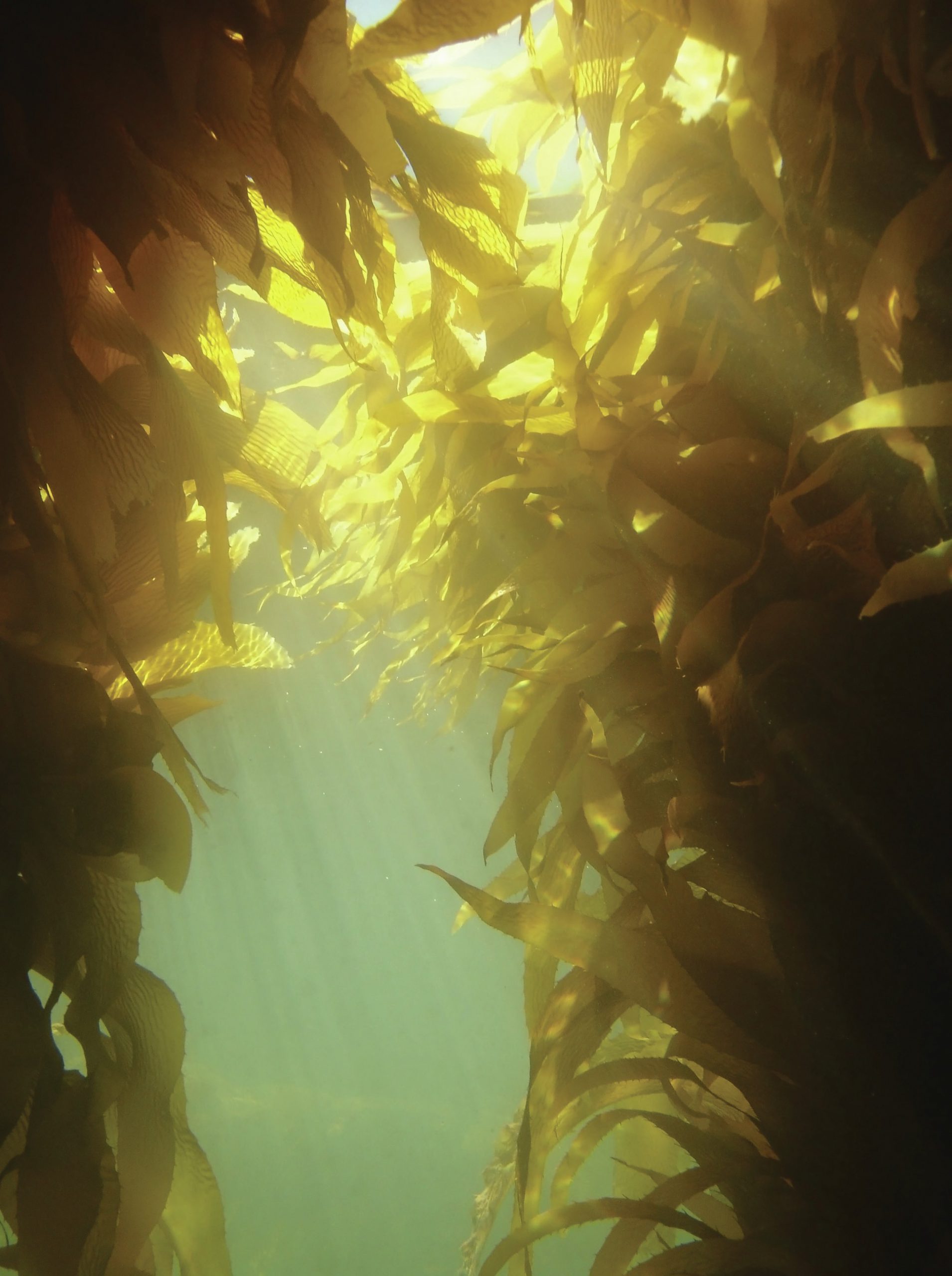
The term algae encompasses a large group of organisms within the kingdom Protoctista. These organisms range from microscopic single cells to the giant tree-like seaweeds called kelp, some of which grow over 50 m long, often forming underwater forests (see Figure 1). Large seaweeds are classified according to their colour (pigments) into ‘green’ (Chlorophyta), ‘red’ (Rhodophyta) and ‘brown’ (Phaeophyta) algae. They all contain the universal green pigment chlorophyll a, but red and brown pigments often mask the chlorophyll these algae contain. These seaweeds are extremely successful in colonising seawater shabitats in the intertidal zone along rocky coasts throughout temperate and cold water areas.
Algae have provided humans with valuable nan resources for thousands of years, including food and chemicals. Their commercially valuable products reflect the large number of survival strategies developed by this group of organisms. Their many different biochemical pathways lead to a range of storage products and cell wall components, which humans continue to exploit. Whereas plants have cellulose as a major component of their cell walls, most algae have little or no cellulose or pectin in their cell walls. Instead, they have other polysaccharides such as agars and carrageenans in red algae, and alginates in brown algae. These carbohydrate polymers are the glue that holds the cells together and give strength, flexibility and resistance to desiccation to the multicellular seaweeds.
Your organisation does not have access to this article.
Sign up today to give your students the edge they need to achieve their best grades with subject expertise
Subscribe




